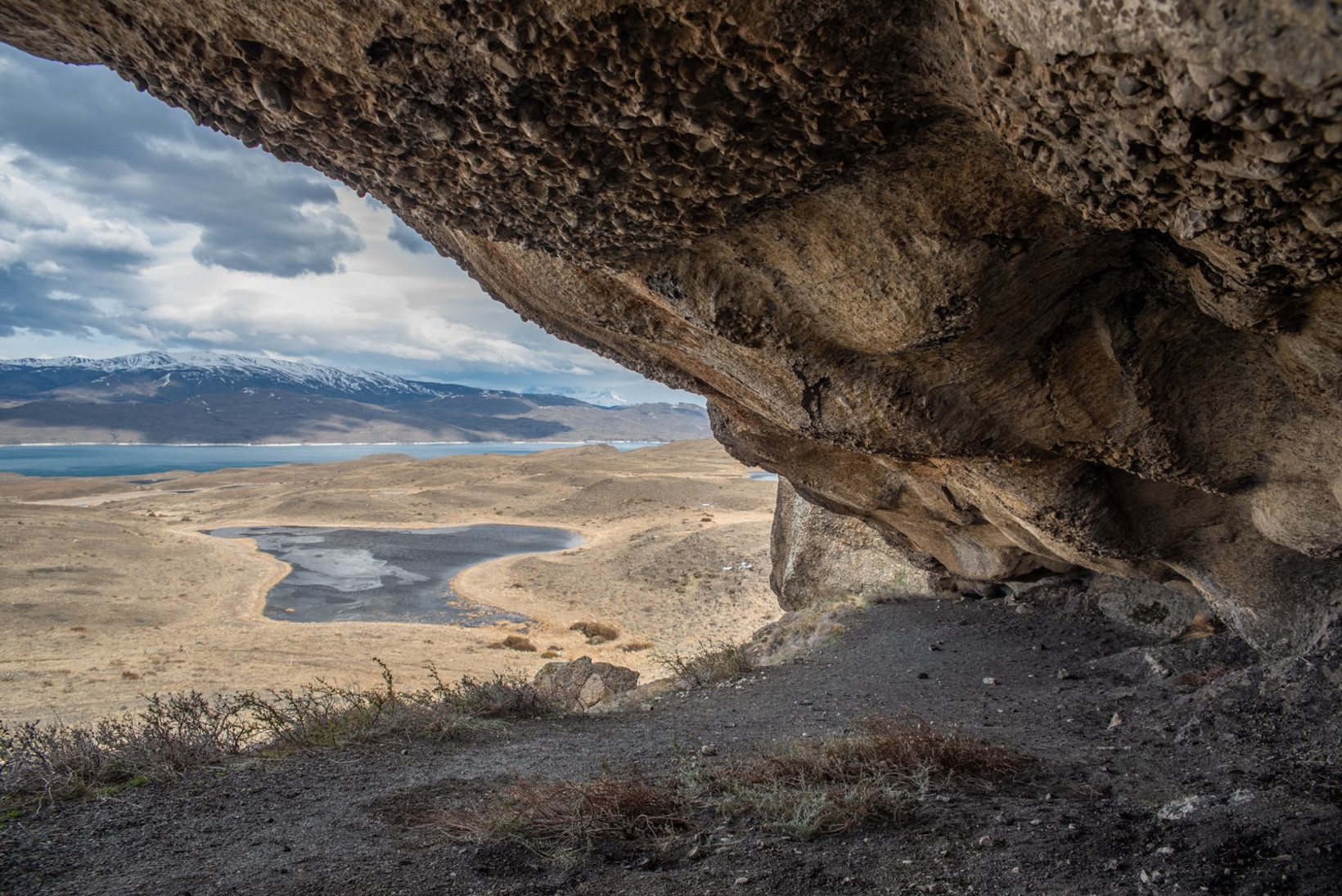Did you know that inside the property of Estancia Laguna Amarga, there are cave paintings? In the Magallanes region, various sites with rock arts, like cave paintings, have been discovered. Some of the more known rock arts have been found in the area of the Mylodon cave (close to Puerto Natales), Pali Aike National Park (close to Punta Arenas, and Estancia San Luis (close to Cerro Castillo village). The most visited ones are located inside the national park, Torres del Paine, with access from the Sarmiento administrative checkpoint. These paintings are known as the Eaves Sarmiento 1.
Eaves Goic cave paintings
Just 500 meters from the Eaves Sarmiento 1 cave paintings, at the same altitude, the Eaves Goic or Eaves Sarmiento 2 cave paintings are located. This is inside the property of Estancia Laguna Amarga, and inside what we call “The Land of the Pumas”. We have a world-famous puma named after this area: Rupestre, which means Cave Paintings in Spanish. She got this name because she has her territory concentrated around the same area as the cave paintings. “Rupestre” appears in many of the documentaries made about pumas in Patagonia.
We sometimes take our guests with a special interest in local history to see the cave paintings. The paintings are made on the sheeling of the cave, and from there, you have a beautiful view of the area. You can actually see the cave where the other paintings are, inside the national park. For sure there was some kind of connection between the two sites!
Descriptions of the rock art
One of the first to study and describe the cave paintings is the Chilean archaeologist Luis Felipe Bate, an investigator associated with the History and Geography department of the Patagonian Institute. Back in 1971, he made some of the first descriptions of the cave paintings:
Large design size of 20 to 90 cm, broad lines of 6-8 cm in a very pale red color, difficult to distinguish, forming figures in the shape of horseshoes or hooks. In ocher red quite clear and superimposed on the previous motifs*. Circles are observed. Traces of an ostrich, and a couple of possible schematic anthropomorphs**. These motifs, in strokes of 1 cm wide, form figures from 6 to 13 cm. Five meters from the cavity in which the described paintings are concentrated, appear some figures almost certainly painted with juice from calafate berries, in very poor condition. There is one arrow pointing upward on two horizontal rows of parallel lines.
Uncovered information
As previously mentiones, these cave paintings have been found in different places in this region like close to the Mylodon cave, Estancia San Luis, and Benitez Hill. Some paintings are lines, circles, and arrows, others are hands or animals, like the ñandu (native rhea). So far, nobody knows the exact year the paintings were made, and we can therefore not say which native group the paintings belong to. Inside the national park, at the Sarmiento 1 paintings, there is an informative sign saying the cave paintings were made by the Tehuelche/Aónikenk people, but that’s the last native group that we know of, that habituated these areas. Who was before them, we do not know. This is why many of the studies of the cave paintings do not have any clear answer to their origins and meaning. Luis Felipe Bate mentions that some of the symbols could be schematic anthropomorphic and that the locations of the paintings were sacred places. Current analysis has discarded that theory due to overlap in the motifs, but leans more towards the theory, that the different murals could be information indicating routes, maps, and weather.
Incomplete designs and conservation of dye
Another thing we do not know is if the cave paintings are complete or incomplete. They could have been painted with other colors, which, due to the composition of the painting, was not possible to preserve due to erosive and climatic reasons. The reason the red color remains after so many years is because the red dye is made with red tuff (a type of colored earth) and mixed with animal oil. This combination has the property of crystallization in the rock, which facilitates its conservation.
____
*a decorative image or design, especially a repeated one, forming a pattern.
** In religion and mythology, anthropomorphism is the perception of a divine being or beings in human form or the recognition of human qualities in these beings.
Source: José Luis Oyarzún Barria (2023)
Photo credit: Nicolas Castro
